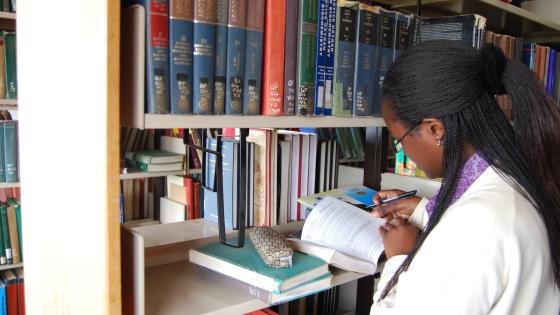Vote buying – understood as payments of cash or gifts in exchange for voting in a particular way or for showing up to vote – is, along with other forms of clientelistic politics, a common phenomenon in today’s developing world (Kitschelt and Wilkinson 2007). The Afro- and Latinobarometers, which survey patterns of vote buying, report that the share of respondents who were offered material benefits in return for their votes is about 17% in Africa and about 25% in Latin America. Field work and survey evidence from different countries report that the amounts of money spent on vote buying can be substantial and that political parties employ a host strategies to ensure that vote buying pays off at the polls (Stokes et al. 2013). Whatever method is used to buy votes or turnout, significant amounts of cash are needed in order to be distributed right before an election.
Macro-scale vote buying
One might, therefore, ask if vote buying occurs on a scale that could, in principle, induce effects on a macroeconomic scale. Could the extent of vote buying increase the aggregate demand for liquidity and affect (recorded) monetary aggregates such as M1, defined as cash and overnight bank deposits? Case study evidence from around the world suggests that the answer is yes. For example, in Armenia – a small landlocked country in the South-Caucasus – local media were full of allegations of vote buying during its 2012 parliamentary elections. Figure 1a shows the total amount of currency in circulation by the day around the 2012 election and reveals a striking pattern: M1 in the Armenian economy increased by over 5% in less than ten days preceding the elections, reaching its peak on the first working day after the election weekend and gradually declining during the following weeks. For this increase to be attributable entirely to vote buying, the going price, under the assumption that 30% of the population got a bribe, would have to have been about US$50 – somewhat higher, but still comparable, to the prices of US$10-20 reported by the media.
Figure 1. Case-study evidence on the daily, weekly, or monthly money supply during elections in selected countries
(a) Armenia 2012 (billion AMD)

(b) Bolivia 2009 (million BOB)

(c) Lebanon 2009 (billion LBP)

(d) USA 2012 (billion USD)

Notes: The sources of the monetary data are the respective national monetary authorities. In national sources, the exact definitions vary, and are as follows – currency in circulation outside of the central bank in sub-figure (a), M1 in sub-figure (b) and (d), and currency in circulation in sub-figure (c).
Similar patterns emerge from other case studies. Figure 1b shows a significant increase in the stock of money between the fourth week of November and the election held in the second week of December of 2009 in Bolivia. Another illustrative example is the parliamentary election in June 2009 in Lebanon where allegations of vote buying were abundant (Figure 1c). Many other examples can be given. This evidence is suggestive that there is an association between vote buying and the supply of money centred around election day. It is clear, however, that these countries are not a random sample of electoral democracies. They are relatively poor, ‘young’ democracies and their political institutions are comparably weak – insofar as these correlations between these money aggregates and the timing of elections are related to vote buying, we would not expect to find similar effects in countries with comparably strong political institutions. Figure 1d shows the movement of M1 in the US around the election in 2012. If anything, it looks like M1 is lower in the election week than in the preceding ones. Similar patterns emerge from other established OECD democracies and other elections.
A new monetary cycle
Can we generalise the evidence from the case studies? In a new paper (Aidt et al. 2015), we show that the answer is yes. Utilising monthly data on M1 for a panel of around 90 low- and middle-income democracies for the years 1975-2009, we demonstrate that there is a systematic increase in the growth rate of M1 in election months. The effect is sizeable – the growth rate of M1, on average, increases by 0.6-0.7 percentage points or by one tenth of a standard deviation in election months. We are unable to find similar effects amongst established OECD democracies or in any other month than the election month. These results are illustrated in the first two bars of Figure 2. They add a new stylised fact to the literature – political cycles in monetary aggregates do exist in certain types of countries, but they can only be detected by studying monthly (or weekly) data as the effect is short-run and centred right around the time of the election. This is one reason why previous tests for monetary political business cycles, which have looked for monetary expansions in the quarters prior to elections, have fared badly and produced, at best, weak evidence (Paldam 1997, Drazen 2001).
What is the mechanism behind this finely timed election cycle in M1 that our research has uncovered? Unlike the traditional monetary political business cycle literature which emphasises deliberate manipulations of monetary policy instruments in the quarters prior to the election by the central bank under influence of the incumbent government (Nordhaus 1975, Persson and Tabellini 1990), we emphasise that short-run monetary cycles may occur as an unintended by-product of the way that electoral politics work in many countries and that the effect is concurrent with the election and works through cash demand associated with vote-buying activities. The demand effect can translate into fluctuations in M1 through at least two channels. First, the resources needed to buy votes may be obtained by converting illiquid assets into cash. This substitution from broad money into cash or deposits directly increases M1. Second, vote buying is an illegal activity and the required funds may come from the shadow economy. Once such shadow economy cash hoardings are used to buy votes, a fraction of them turns into deposits in banks. This will, in turn, increase the money multiplier and offer leeway for an increase in M1. Either way, the result is a spike in M1 just before elections.
Figure 2. Illustration of main results – estimates of election-day effect on monthly growth of M1 in selected sub-sample of countries

Notes: Countries/observations in parentheses. Specification – each bar represents the point estimate and the line indicates the 90% confidence interval of the election-day effect. The dependent variable is the monthly growth of M1. All regressions control for GDP per capita, GDP per capita growth, inflation, the exchange rate, resource rents. They also include three lags of the dependent variable, and country, year and month fixed effects. Standard errors are robust to heteroscedasticity and are clustered at the level of countries.
There are several important pieces of evidence that collaborate this interpretation. First, the average effect masks a considerable amount of heterogeneity. The election effect is particularly strong in sub-Saharan Africa, East Asia and the Pacific, Latin America and South Asia (Figure 2), regions where survey evidence suggests that vote buying is particularly prevalent. Survey evidence also suggests that vote buying is more widespread amongst poor and uneducated voters (Jensen and Justesen 2014). Consistent with this, Figure 3 shows that the election effect is strongest in low-income countries, with a large fraction of the population below the poverty line and with low levels of education attainment. Of course, the vote-buying explanation is not the only game in town. Other possibilities include money demand generated by extra economic activity around elections or elections being called in months with high economic activity, spending on regular election campaigns, or the government paying bills and clearing wage array just before elections. We systematically evaluate and rule out such alternative explanations of this empirical regularity, and arrive at the conclusion that the interpretation that provides the most coherent account of the collage of evidence that we present is the vote-buying explanation.
Figure 3. Marginal effects of elections on M1, conditional on education and poverty
(a) Tertiary education

(b) Poverty

Notes: Specification: the dependent variable is the monthly growth of M1, point estimates and 90% confidence intervals represent the interaction effect between the election-day variable and education, measured as the enrollment rate in tertiary education (left) and poverty, measured as the share of the population with less than 2 US dollars per day (right). Both regressions control for GDP per capita, GDP per capita growth, inflation, the exchange rate, resource rents, the Polity IV index, an indicator for ‘new’ democracies, and include three lags of the dependent variable, and country, year and month fixed effects. Standard errors are robust to heteroscedasticity and are clustered at the level of countries.
Conclusions
Our findings help to portray a more comprehensive picture of the potential link between elections and monetary aggregates than the one presented by the literature on monetary political business cycles so far. In particular, the evidence points to the role of passive monetary developments that do not require any monetary policy decisions. This obviously allows for new avenues for monetary political cycles even in democracies where central banks are independent of political influence. Our approach also opens up potentially useful ways to quantify vote buying and electoral corruption more generally.
References
Aidt, T S, Z Asatryan, L Badalyan, and F Heinemann (2015), “Vote buying or (political) business (cycles) as usual?”, CESifo Working Paper No. 5508, September.
Drazen, A (2001), “The political business cycle after 25 years”, NBER Macroeconomics Annual 2000 Cambridge, MA: MIT Press.
Jensen, P S and M K Justesen (2014), “Poverty and vote buying: Survey-based evidence from Africa”, Electoral Studies 33: 220–232.
Kitschelt, H and Wilkinson, S I (2007), Patrons, Clients and Policies. Patterns of Democratic Accountability and Political Competition. Cambridge University Press.
Nordhaus, W D (1975), “The political business cycle”, The Review of Economic Studies 42 (2), 169–190.
Paldam, M (1997), “Political business cycles”, in D C Mueller (ed.), Perspectives on Public Choice. A Handbook, Cambridge, United Kingdom: Cambridge University Press, pp. 342–372.
Persson, T, and G E Tabellini (1990), Political Economics: Explaining Economic Policy, Cambridge, MA: MIT Press.
Stokes, C S, T Dunning, M Nazareno, and V Brusco (2013), Brokers, Voters, and Clientelism: The puzzle of distributive politics, Cambridge University Press.













